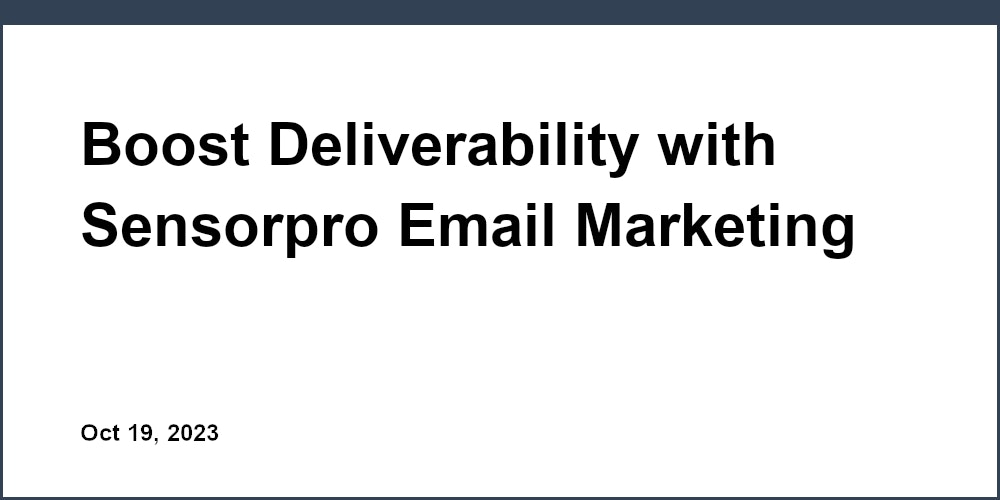Introduction
Email marketing remains one of the most effective digital marketing channels, but executing campaigns at scale can be challenging. Mass email sender software aims to simplify the process by providing automation, analytics, and deliverability capabilities tailored to marketers' needs. In this guide, we'll explore how these tools can optimize campaigns through segmentation, testing, and data-driven insights. Whether you are looking to scale your outreach or struggling with critical issues like low delivery rates, mass email sender software offers capabilities to streamline workflows and enhance performance. Read on as we dive into selecting and leveraging these solutions to get the most value out of your email marketing efforts.
Email marketing still provides one of the highest returns on investment across digital channels despite increased competition for consumer attention. However, marketers face rising challenges from inbox clutter to tightening regulations around permissions, data use, and spam. Mass email sender tools emerged to address the complexities of reaching wider audiences by automating sending and optimizing critical factors like deliverability. Key capabilities include contact management, campaign creation workflows, A/B testing, and in-depth analytics on engagement. This enables tailored messaging, informed optimization, and overall simplified execution at scale. For marketers seeking to expand their email programs or struggling with limitations of manual sending, mass email sender software can provide a solution tailored to their needs.
Benefits of Mass Email Sender Software
Mass email sender tools streamline the process of managing contacts, creating campaigns, sending messages, and analyzing results. This provides a variety of advantages over manual email sending or makeshift solutions for teams hoping to scale outreach.
Time Savings Through Automation
Mass email tools automate the sending process with capabilities like pre-built templates, drag and drop editors, and content importers that simplify campaign creation. Workflows with triggers based on dates, events, and customer actions like abandoned carts enable timely, relevant messaging without manual oversight. Send scheduling also batches delivery over days or weeks to spread volume. This removes the need for sending individual emails manually, saving substantial time. For example, setting up a weekly promotional email series with unique content to engage subscribers takes minutes versus hours.
Improved Deliverability
These tools are designed specifically to help ensure emails reach the inbox and avoid spam filters. Features like dedicated IP addresses and sender domains establish positive reputation over time. Sender authentication protocols like SPF, DKIM, and DMARC verify message legitimacy. Options to gradually increase sending volume and test content before major sends help optimize delivery. This provides more control over critical deliverability factors than typical email services. According to Validity, authenticated domains see an average of 96% inbox placement versus just 64% for non-authenticated.
Data-Driven Campaign Optimization
In-depth analytics provide the data needed to continuously optimize campaigns. Metrics on opens, clicks, conversions, and unsubscribes inform efforts like list segmentation and targeting. A/B testing subject lines, content, timing, and more simplifies optimization. For example, Subject A may have a 30% open rate versus Subject B with 45%. Making Subject B the standard improves results. CRM integrations combine datasets for deeper insights like engagement scoring to identify high-value subscribers. This enables a targeted, data-driven approach.
Key Features to Look For
With a crowded marketplace, comparison shopping is key to find the right mass email sender for your needs and budget. Here are some of the core capabilities to evaluate:
Intuitive Automation
Look for an intuitive drag-and-drop campaign builder and pre-built templates to create quality emails efficiently. Triggers based on dates, events like cart abandonment, and customer actions enable timely, automated workflows. For example, set up a 3-email re-engagement flow for lapsed contacts.
Segmentation and Personalization
Tools should allow dividing contacts into targeted lists and segments for tailored messaging. Flexible options to group by data like purchase history and demographics are important. Personalization features insert subscriber names, purchase data, and more. Send the right content to the right people.
Actionable Analytics
Prioritize tools with segmentation capabilities in reporting and easy API access to integrate results with other marketing data. Critical metrics include open and clickthrough rates by campaign, list, link, and more. Comparison to industry benchmarks provides context to further optimize efforts.
Proven Deliverability
Look for dedicated IP addresses, sending domains, and sender authentication protocols like SPF, DKIM, and DMARC to ensure reliable inbox delivery. Spam testing capabilities help avoid blacklisting. High deliverability pays off in better results.
Expanded Integrations
Support for connecting popular platforms like email services, CRM, ecommerce, and marketing tools expands capabilities. For example, integrate email with your CMS, community platform, and sales tools. Leverage more data points and automations.
Scalability
As your needs evolve, the platform should easily scale both throughput and functionality. Enterprise-level plans with high volume sending show room for growth. Make sure capabilities scale well to support expanding subscribers and campaigns.
Planning Your Campaigns
Start by developing buyer personas and mapping typical customer journeys to inform email content and workflows. Determine optimal frequency and timing with A/B testing. Personalize content using integrated datasets. Automate relevant post-purchase or re-engagement workflows.
Executing Campaigns
Leverage templates, images, and content blocks to efficiently create quality emails. Use built-in testing capabilities to compare approaches and determine what resonates. Closely monitor engagement metrics by segment to identify areas for optimization.
Scaling Your Efforts
Use segmentation to deliver targeted content to new subscriber groups as you expand reach. Monitor engagement closely as you increase volume and frequency scaling efforts. Continuously refine and optimize based on performance data. Integrate channels like SMS to complement email.
Conclusion
For marketers seeking to simplify email sending and boost results, mass email sender tools provide sophisticated automation, segmentation, and optimization capabilities. Following proven best practices in planning, executing, and scaling campaigns enables marketers to turn email into a high-converting channel regardless of their size and resources. Solutions like Sensorpro offer the enterprise-level functionality needed to streamline complex workflows, improve deliverability, and drive more value from email with minimal added effort. Reach out today to see how their platform's automation and insights can take your efforts to the next level.


